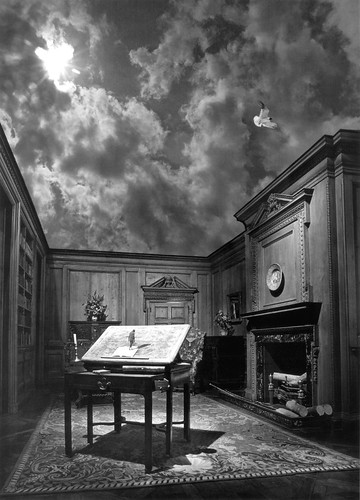"Friday, April 03, 2009
The Singularity
# posted by jdg @ 11:01 AM
Last week I read in the morning paper about a street here where 60 out of 66 homes were vacant or abandoned on a single block. The reporter called it a "ghost street." Yesterday I found myself in the area. Other than an errant sofa, the street was completely empty, almost peaceful. I took a photo of every house on the north side of one block and then stitched them together. If you were to compare the current international housing crisis to a black hole sucking the equity out of our homes, this one-way street near the northern border of Detroit might just be the singularity: the point where the density of the problem defies anyone's ability to comprehend it. These homes started emptying in 2006.
Click on the image below to load a large file in your browser and then zoom and scroll right. This is the entire north side of the block: every home, every lot. You'll notice the fourth and seventh homes appear occupied. Pay attention to the state of all the other houses rather than the terrible stitching job:
This is just another virtually-abandoned block in Detroit. Eventually the burned houses will collapse; the boarded-up houses will burn. Someday it will all be green.
But this is what it looks like today."

At first glance, this photo montage looked like prime 'wild vs. civilization' material. When I opened the accompanying text, however, I realized it was another devastating 'man vs. economy' (read: family man vs. wild with greed corporate man) struggle. If I have to directly answer how this is effecting my photography, one answer would be that I simply can't afford the cost of film and processing anymore. My job security is dubious at best, and somedays I wonder where my next rent check will come from...a switch to digital was one of my first budget cuts; hey man, times are tight.
But, on another note, I could imagine a conceptual shift in this series or a similar offshoot to include the effects of man on man, in turn, returning himself to a lesser degree of civilization.
At the very least, or at the lowest common denominator, you can see how this blog post is relevant to us all. Scary.

















































